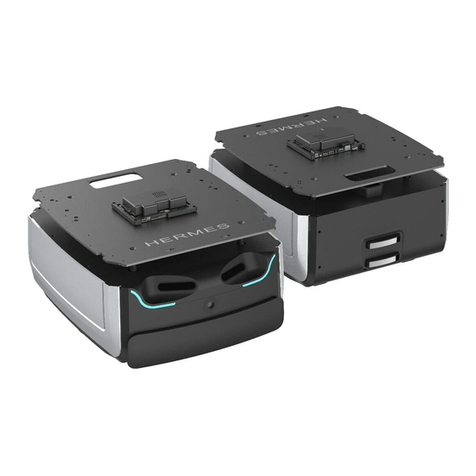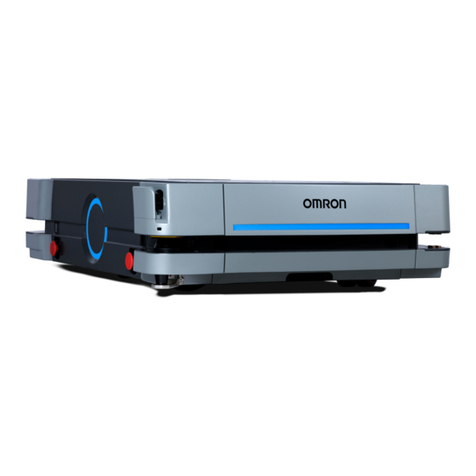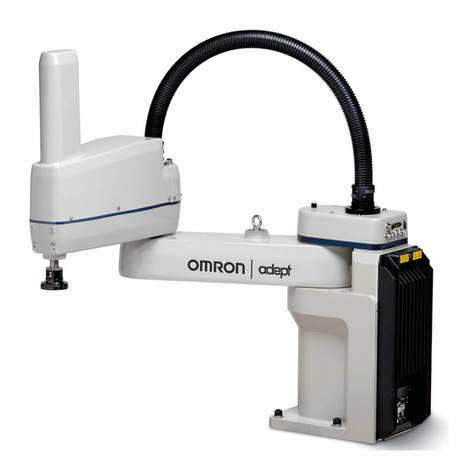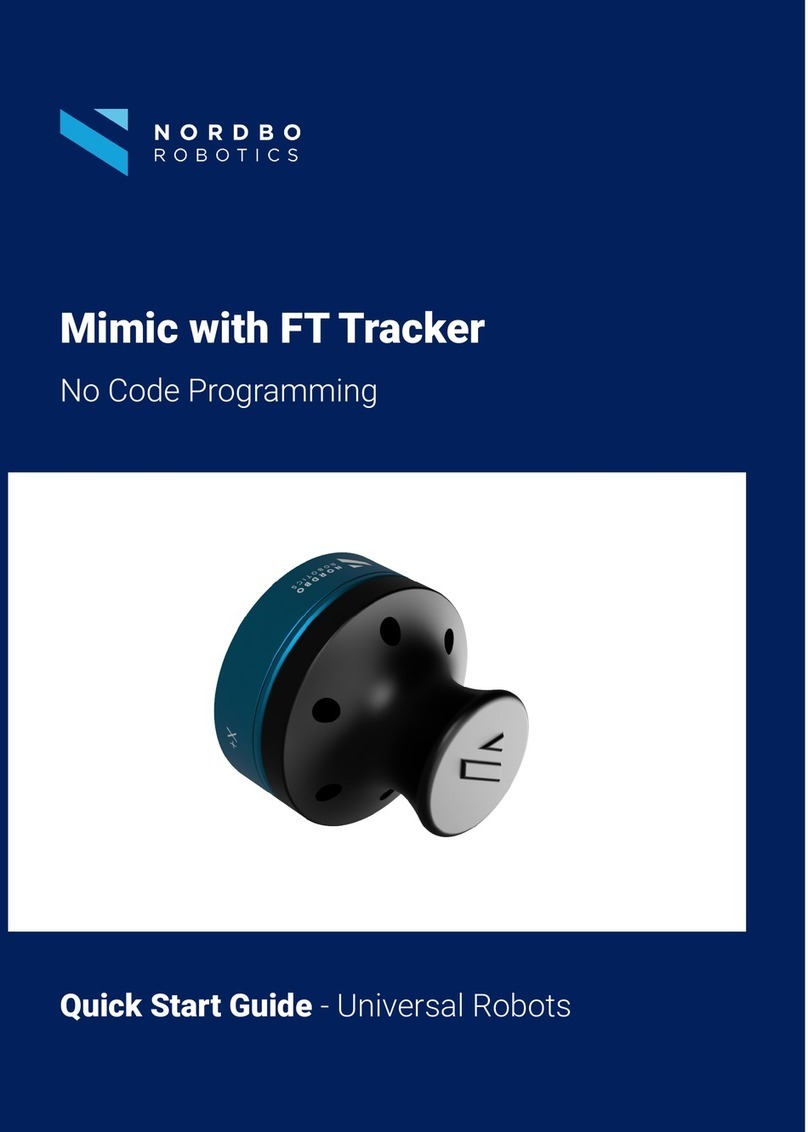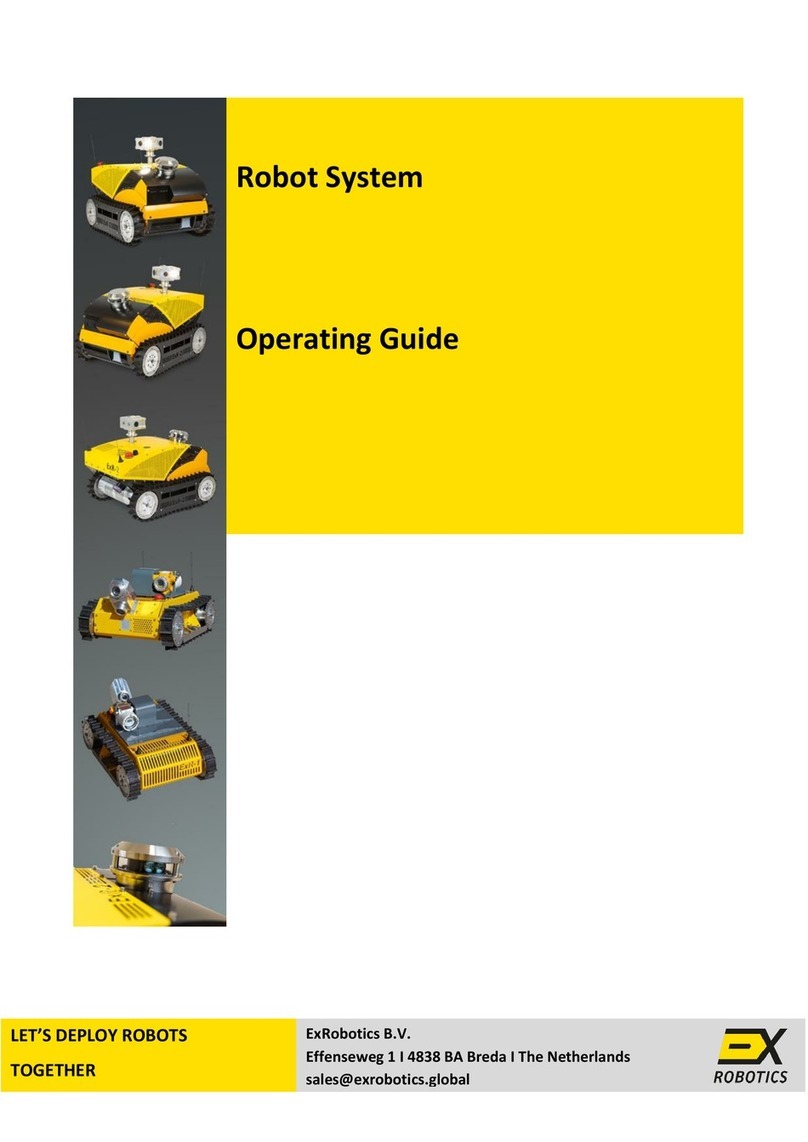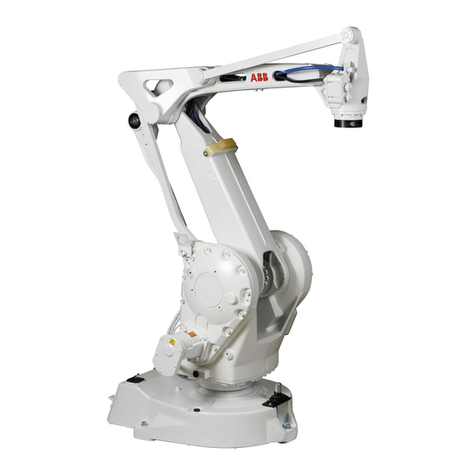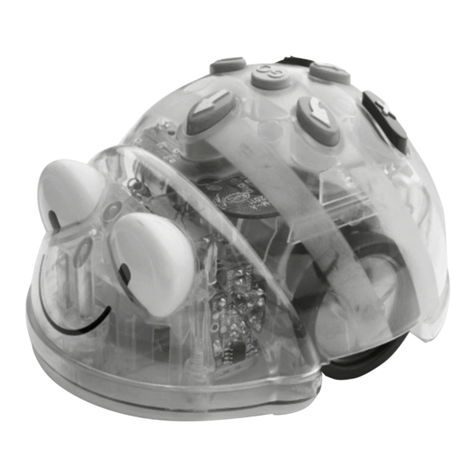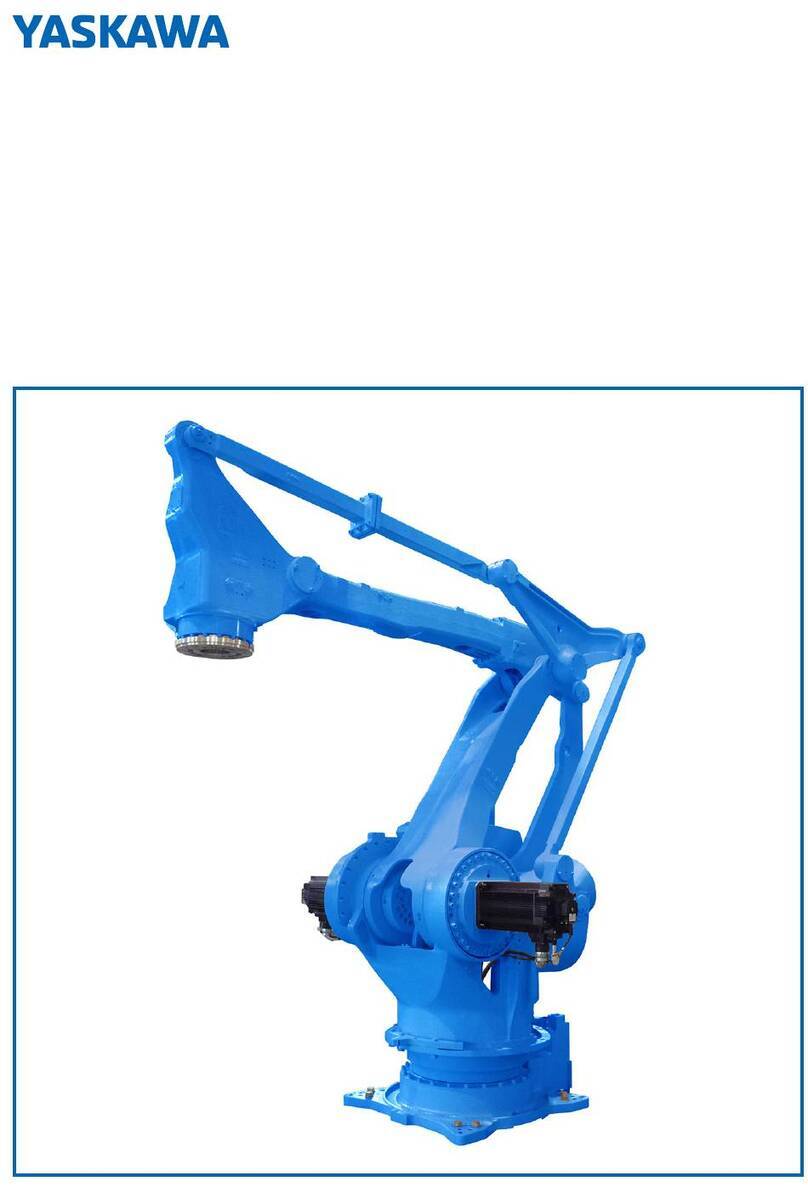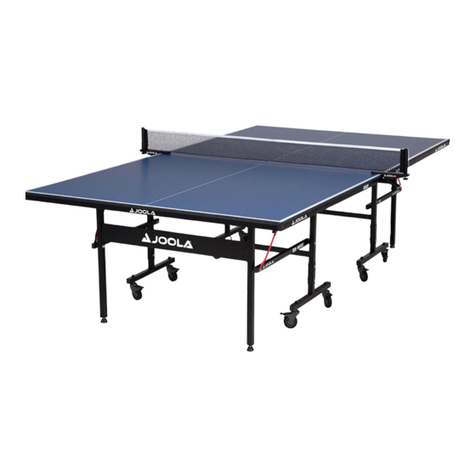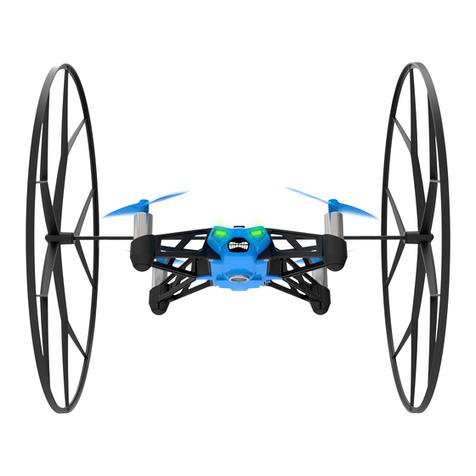Slamtec Athena 2.0 User manual

Athena 2.0
General Purpose Robot Platform
Model: N5M42-R2TPL
2022/03/16.rev.1.0 Read through this user manual carefully before
use.
User Manual
○Small- to medium-sized robot
development
○Highly adaptable and scalable
○Powerful optional functions
Learn more >
Shanghai Slamtec Co., Ltd.

1/ 49
Table of Contents
1. PRODUCT OVERVIEW..........................................................................................3
1.1 INTRODUCTION....................................................................................................3
1.2 BASIC FUNCTIONS ................................................................................................3
1.3 EXTERIOR............................................................................................................5
1.4 CHARGING DOCK .................................................................................................6
1.5 PRODUCT LIST .....................................................................................................6
2.PRODUCT PARAMETERS ......................................................................................7
3. INSTRUCTIONS OF HARDWARE..........................................................................10
3.1 WIRE INSTRUCTIONS ..........................................................................................10
3.2 IMPORTANT INTERFACES OF DEVELOPING BOARD ON RK3399 .................................13
3.3 REFERENCE OF HARDWARE DESIGN.......................................................................13
4. REFERENCE OF STRUCTURE DESIGN..................................................................24
4.1 INSTALLING INTERFACE OF HOST COMPUTER ..........................................................24
4.2 INSTRUCTION OF LOAD LIMIT ...............................................................................24
4.3 RADAR CLEARANCE AREA ....................................................................................25
4.4 DEEP CAMERA CLEARANCE AREA..........................................................................26
5. SETUP INSTRUCTIONS........................................................................................27
5.1 OPENING..........................................................................................................27
5.2 PLACING CHARGING BASE ...................................................................................27
5.3 POWER ON/OFF...............................................................................................28
5.4 CHARGING ........................................................................................................28
5.5 EMERGENCY STOP &BRAKE AND RESET..................................................................28
5.6. CONNECTION TO COMPUTER ..............................................................................29
5.7 MAP BUILDING AND UPLOAD...............................................................................31
5.8 HOST COMPUTER COMPLETES STARTUP AND LOADING THE MAP ..............................34
6. ADJUSTING TOOLS .............................................................................................36
6.1 ROBOSTUDIO ....................................................................................................36
6.2 WEB MANAGEMENT BACKSTAGE .........................................................................36

2/ 49
7. DEVELOPER TOOLS.............................................................................................37
7.1 START USING ....................................................................................................37
7.2 INTER-SYSTEM ADJUSTING FRAMEWORK................................................................37
7.3 INSTRUCTIONS OF EACH SYSTEM...........................................................................37
7.4 DEMONSTRATIONS OF CODE................................................................................38
7.5 DETAILS OF ROBOT API ......................................................................................39
8. INTRODUCTION AND USE OF ELEVATOR CONTROL ..........................................42
8.1 INTRODUCTION..................................................................................................42
8.2 FEATURES .........................................................................................................42
9. SPECIAL NOTE ....................................................................................................44
9.1 CHARGE POINT DEPLOYMENT ...............................................................................44
9.2 RESTRICTED USAGE SCENARIOS .............................................................................44
9.3 FAULTS THAT CANNOT BE HANDLED TEMPORARILY ...................................................45
9.4 NOTES .............................................................................................................45
10. MAINTENANCE.................................................................................................47
11. COMMON FAULTS AND TROUBLESHOOTING..................................................48
12. CERTIFICATE.....................................................................................................48

3/ 49
1. Product Overview
1.1 Introduction
Developed by Slamtec, Athena 2.0 is a scalable and low-cost robot platform capable of
meeting the needs of small-sized robot application development in areas such as smart
patrol robots, container transportation robots, food delivery robots, and more.
The built-in SLAMCUBE 2 autonomous localization and navigation system enables path-
finding and localization and navigation features, making Athena 2.0 capable of performing a
variety of tasks across different commercial environments.
Cross-floor Moving, Light Deployment
Athena 2.0 is equipped with the latest version of Slamtec Smart Elevator Control 4.0, which
allows it to adapt to different brands of elevators.
Through the latest version of Slamtec RoboStudio 2.0, Athena 2.0 supports integration of
maps of multiple floors in one click. This improves the mapping efficiency and streamlines
the deployment, thus enabling light deployment and fast use.
Multi-Sensor Data Fusion
Athena 2.0 uses multi-sensor data fusion technology. Fitted with equipment such as lidar,
magnetic sensors, depth cameras, and bumper sensors, Athena 2.0 can implement
autonomous mapping, localization, and navigation by flexibly responding to complex and
ever-changing operational environments.
1.2 Basic Functions
1.2.1 Compact and Flexible
Athena 2.0 can move flexibly in a small size, thus meeting the needs of flexible moving and
deployment-free scenarios. Thanks to its high obstacle passing stability, Athena 2.0 can easily
pass narrow aisles and ramps.
1.2.2 Cross-floor Delivery and Light Deployment
Athena 2.0 is equipped with the latest version of Slamtec Smart Elevator Control 4.0, which
allows it to adapt to different brands of elevators. When combined with RoboStudio 2.0, it
can effectively enable light deployment and fast use.
Smart Elevator Control 4.0 addresses the challenges of bad weather, as well as unstable air
pressure and communication in high-rise buildings. It provides accurate detection of elevator
statuses along with call-control functionality. For hotel/restaurant delivery robots, it provides
efficient and reliable solutions that help them autonomously navigate elevators in cross-floor
scenarios.
1.2.3 Autonomous Mapping, Localization and Navigation
Athena 2.0 is built with the latest version of Slamtec SLAMCUBE 2 autonomous localization
and navigation system which is more stable and can accommodate more interfaces. The

4/ 49
structural design integrated three boxes into one, saving more space for chassis layout. With
the path-finding, autonomous mapping and localization and navigation features, it helps
robots figure out where they are, where they should go, and the best way to get there. It
enables the robots to automatically find paths, locate, and move as needed without human
assistance. In addition, Athena 2.0 supports multi-route patrol mode.
1.2.4 Rich Port Options and High Scalability
Athena 2.0 owns a completely open hardware and software platform and supports extended
hardware. The rich port options eliminate the restrictions in development platform and
programming language, which makes Athena 2.0 universal for all types of host computer and
support development of business logic applications through SLAMWARE SDK.
1.2.5 360°Protection and Smart Obstacle Avoidance
Athena 2.0 is fitted with equipment such as lidar, magnetic sensors, depth cameras, and
bumper sensors, and adopts the multi-sensor fusion technology. It provides rapid and
accurate identification of surrounding active environments, enabling smart obstacle
avoidance and greatly reducing the chances of safety incidents. It also has fall-resistant and
collision-resistant protection and emergency stop features, making the food delivery process
fully protected, secure, and reliable.
1.2.6 Autonomous Recharging
The autonomous recharging feature ensures that Athena 2.0 will have enough power to
complete the assigned tasks. Athena 2.0 will return automatically to its charging station
when its remaining power falls below the set limits.
Special note: the automatic recharge function cannot be triggered only under the condition
of that combined with upper machine with delivery and disinfection plug-in or customized
models.
1.2.7 Multi-robot Scheduling & Collaboration
In scenarios such as large hotels, office buildings, and malls, multiple robots will avoid each
other according to the task priority when they meet. The collaboration of multiple robots
can further improve the delivery and guide efficiency.
Athena 2.0 supports local area network (LAN) and cloud platform collaborative operations,
along with the dynamic adjustment of both speed and delivery routes in accordance with the
environment to realize efficient, safe, and reliable multi-point delivery.

5/ 49
1.3 Exterior

6/ 49
1.4 Charging Dock
Charging dock diagram
1.5 Product List
Name
Quantity
Notes
Athena 2.0 body
1
Athena 2.0 chassis body
Charging dock
1
Select environment for deployment
before use.

7/ 49
2.Product Parameters
Name
Athena 2.0 chassis
Core feature
SLAMCUBE 2 localization and navigation
Mass and volume
Length x width
460*428 mm, rotation diameter
551 mm
Height
232mm (excludes controller)
Weight
22 kg
Rated load
40 kg
Max load
(parallel cement
pavement)
60kg
Sensor
performance
parameters
Lidar sensor
Max scan radius (90%
surface reflective rate)
30 m (TOF S2 radar)
Depth camera
sensor
Quantity
1 for standard configuration (2
can be customized)
Detection range
0.4–2 m
Field of View (FOV)
H:75±3°;V:51±3°
Physical
magnetic
sensor
Quantity
2 units
Max detection range
3.5 cm
Bumper
Quantity
2 units
Trigger method
Physical collision
Mapping performance
Map resolution
5 cm
Max mapping area
500m×500m
Motion parameters
Max move speed
1.0 m/s (1.2 m/s can be
customized)
Max cross slope
10°
Ramp: Max slope angle of chassis:
10°; Slope =18%*Ramp; The
height of the full-machine mass
center is within 18 cm, and the
safety ramp within 10°.
(A 100% slope means a 45°ramp,
whose height difference for 100 m
is 100 m.)
Passing obstacle height
2 cm
Passing obstacle width
4 cm
Min pass range
55 cm
Motor
Wheelset
2x 6.5-inch in-wheel motor
4x 2.5-inch omni-directional
wheel

8/ 49
User port
Hardware port
Ethernet
1x RJ45 Gigabit Ethernet port
Power connector
DC 24V 9.5A
DC 12V 2A
Wi-Fi
2.4 GHz
HDMI
1x HDMI
Audio
1x 3.5mm headset socket
1x LINE_MIC audio jack (Co-lay
with headset socket)
1x Dual-channel 5w/8Ω amplifier
jack
Type-C
Standard USB 3.0 Type-C port
Software API
SLAMWARE™
HTTP API, supports different
development languages and
platforms, such as Windows, iOS,
Android, and Linux
Battery and capacity
Capacity specifications
18 AH (standard)
Battery scalable to 90 AH
No-load operating
time
19h (no load)
Full- load operating
time
8h(full load)
Charging time
3-4 h (standard charging station)
Battery life
500 charges
Power consumption
Power dissipation in
standby time
17W (no load)
Full-load rated power
consumption
(full load weight: 40kg)
40W (moving)
Max power
consumption with
external load
228W
Rated output
25.2V 2A
Noise
Operating noise
≤ 60 db
Operating environment
Operating
temperature
0℃–40℃
Transport and storage
temperature
-25℃to +55℃
Operating humidity
30%–70%RH (No condensation)
Applicable altitude
≤ 2000 m

9/ 49
Charging station
Size
360 mm*150 mm*320 mm (W*D*H)
Color
White
Rated input
100-240V 50/60 Hz 3A Max
Rated output
DC 25.5V 6A

10 / 49
3. Instructions Of Hardware
3.1 Wire Instructions
Interfaces
Picture
Index
Function
Note
Power ON/OFF
--
Power switch of the entire
system. Short press until the
indicator light turns on
power-on, long press until
the indicator light turns off
power-off.
--
Shut Down
--
Effectively control
Athena2.0 in an emergency.
After pressing, Athena2.0
will immediately shut down.
It is a switch that
must be designed
according to rigid
regulations. If the
switch is not
designed,
Athena2.0 will
refuse to run.
Brake
--
When robot is energized,
press this switch to release
the brake and you can push
the robot freely; press it
once again to brake, and the
robot will not be able to
push it freely.
Invalid if the
robot is not
turned on
24V Power
Rated
Voltage
24V
Maximum
current
9.5A
Maximum output power is
200W, can be used to supply
power to external devices
No overload
12V RK3399
Power Supply
Wire
Rated
Voltage
12V
Maximum
Current
20A
Cube2 supplies power to the
RK3399 development board.

11 / 49
Depth Camera
Interface
USB3.0
Connected to the RK3399
development via USB3.0 to
obtain information.
Need to pay
attention to the
left and right
sequence.
Docking Camera
USB2.0
Connected to the RK3399
development via USB3.0 to
obtain information of code
scanning camera.
Assist precise
docking.
12V -DISP
Rated
Voltage
12V
(See the
figure
below for
the design
drawings)
12V working power of
Cube2 to provide the
external display screen of
human-computer
interaction.
Maximum current
2A
USB-Type-C
USB3.0
Used for communication
between 3399 and Cube2.
Connect to
Hub3.0
Design drawing of 12V -DISP terminal

12 / 49

13 / 49
3.2 Important Interfaces of Developing Board on RK3399
3.3 Reference of Hardware Design
Notice:
(1) Before starting, please read the manual carefully to avoid product damage caused by misoperation;
(2)The working temperature of the main board is 0℃to +40℃, 30%-70%RH, in order not to damage
the product due to excessive cold/heat or moisture;
Test
Screen
USB Warning Light
User Button
WIFI
Antenna
4G MODULE
(ANTENNA
INCLUDED)
SIM Card
USB Port
User Signal Port
Chassis to be tested

14 / 49
(3) Do not make strong mechanical movement of this product, and operate this product before static
protection is done;
(4) Please turn off the power before installing any external cards or modules;
(5) Please ensure the external power supply is DC 12V to avoid damage to the main board;
3.3.1 Product Description
RK3399 Android system main board adopts Rockchip RK3399 main control solution. The specification of
the main board is a standard 3.5-inch structure with a size of 146*102mm.
The main board processing core RK3399 is based on the dual Cortex-A72+four Cortex-A53 core CPU
structure. It uses the powerful Mali-T864 GPU graphics display core, supports VP9, H.265/H264 hardware
decoding, and 4K ultra high-definition output.
Onboard 4GB DDR3 memory and 32GB storage.
The display interfaces are: 1*HDMI, supporting dual-screen display, which can meet the needs of
flexible and diverse point-screen applications.
The board has a 3.5mm headset socket and a dual-channel 5W power amplifier speaker interface,
which can meet the needs of audio applications.
The main board integrates a gigabit network port, and also integrates a WIFI/Bluetooth module to
support various network access methods.
The onboard Mini-PCIe expansion slot supports 4G network card module expansion.
The main board has 5 USB ports and 1 Type-C slot, 2 serial slots, and 1 set of 8 GPIO pins. In addition,
the main board has a rich function expansion pin interface.
The main board uses a single 12V DC adapter for power supply.
Characteristics of Main Board:
★Based on Rockchip RK3399 ARM processor solution;
★Display interfaces: eDP and HDMI;
★Hardware decoding H.265 high-definition video, support 4K ultra high-definition output;
★Rich functions, onboard 5*USB/2*COM/8*GPIO/1*IR infrared;

15 / 49
6-1 RK3399 Main board basic application diagram
3.3.2 Product specifications
(1)Hardware Specification Sheet
Processor
Rockchip RK3399 ①
RAM
4GB DDR3
Display
1*eDP
1*HDMI output supports
480p/480i/576p/576i/720p/1080p/1080i/4k
Internet
1*RJ45 Gigabit Ethernet
1*WIFI+Bluetooth ③
Audio
1*3.5mm headset socket
1*LINE_MIC audio pin(with headset socket Co-lay)
1*Dual-channel 5w/8Ω power amplifier speaker pin
Storage
32GB eMMC
COM
2* serial port ④
Others
4*USB2.0、1*USB3.0、1*USB3.0 Type-C OTG;
1* standard Mini-PCIE slot,for 4G module
1*TF card extension ⑤
8 GPIO pin
1*IR infrared extension pin
1*I2C touch screen extension pin
2 A/D conversion pin

16 / 49
2*MIPI-CSI2 camera expansion port
1*G-Sensor gravity sensor
Power connector
DC2.5*5.5 socket/PH2.0-4pin,12V DC input
Main board
specifications
146*102*22mm,green
Operating system
Android 7.1
Working environment
Temperature:0~+40℃
Humidity:30~70%RH
Remark:
①RK3399 is dual-core Cortex-A72 (the highest frequency is 1.8GHz) + 4-core Cortex-A53 (the highest
frequency is 1.4GHz);
②WIFI specifications:802.1b/n/g @ 2.4GHz; Bluetooth specifications:Bluetooth 4.0;
③COM1 is the Debug interface and supports TTL/RS232, COM2 can communicate with the onboard
MCU, and can also be used as an external RS232/RS485 interface;
④TF card supports maximum expansion to 128GB.
(2)Size of main board
Unit: mm

17 / 49
3.3.3 Introduction of Interfaces
(1)Front view of main board
(2)Front IO diagram of the main board
(3)IO diagram behind the main board
(4)Back view of main board

18 / 49
Caution:The identification method of the first pin on the main board is: 1 has a white and bold
silkscreen; 2 the pins seen on the back of the main board are square holes.
3.3.4 Definition of pin function
(1)Pin Interface Distribution

19 / 49
(2)Description of silkscreens
Silkscreen
Description
DC_IN
+12V DC input interface (φ2.5mm base)
PWRIN
PH2.0-4PIN power input terminal
LINE_MIC
PH2.0-5P LINE-OUT&MIC-IN audio extension socket
UBOOT1
Uboot flash mode button[1]
SPK1
4-PIN PH2.0 amplifier speaker pin(5W/8Ω)
HP_MIC
3.5mm headset socket
HDMI
Standard HDMI HD digital display interface
TYPEC
Standard USB3.0 Type-C interface[2]
USB1
Standard USB3.0 Type-A single layer interface
USB2
Standard USB2.0 Type-A single layer interface
USB3
Standard USB3.0 Type-A single layer interface
RJ45
Gigabit RJ45 network interface
SIM
SIM card slot
SD
TF expanded card slot
JCOM1
PH2.0-4PIN COM1 RS232 mode pin
TTL_DBUG
PH2.0-4PIN COM1 TTL battery mode pin(DEBUG serial port)
JCOM2
4PIN-PH2.0 RS232/485 serial port 2 sockets
DEBUG
PH2.0-4PIN onboard MCU module debugging interface
JC2
COM1 RS232/TTL mode setting jumper [3]
JC3
COM1 RS232/TTL mode setting jumper [3]
JC4
COM2 internal onboard MCU/external JCOM2 setting jumper [4]
JC5
COM2 internal onboard MCU/external JCOM2 setting jumper [4]
JIR
DuPont 2.0-3pin infrared receiver extension pin
ANT
WIFI/Bluetooth IPEX antenna interface
BAT
RTC clock 3.3V battery plug
CAM_FLASH
Camera flashlight interface
F-KEY
Function key pin [5]
MINI-PCIE
Mini-PCIe module slot
CMR_MIPI0
MIPI-CSI2 camera interface 1
CMR_MIPI1
MIPI-CSI2 camera interface 2
WLED1
mini-PCIe expansion module signal light
JUSB1
4PIN-PH2.0 USB2.0 extension pin 1
JUSB2
4PIN-PH2.0 USB2.0 extension pin 2
JUSB3
4PIN-PH2.0 USB2.0 extension pin 3(and USB1 Co-lay)
S-KEY
4PIN-PH2.0 system power on/off, reset pin
PWRLED
Power indicator pin [6]
JEDP
eDP HD digital display interface [7]
AD
2 way A/D conversion pin
I2C
I2C pin
This manual suits for next models
1
Table of contents
Other Slamtec Robotics manuals
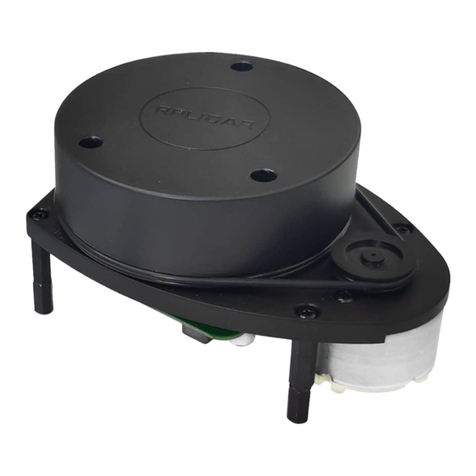
Slamtec
Slamtec RPLIDAR A1 User manual
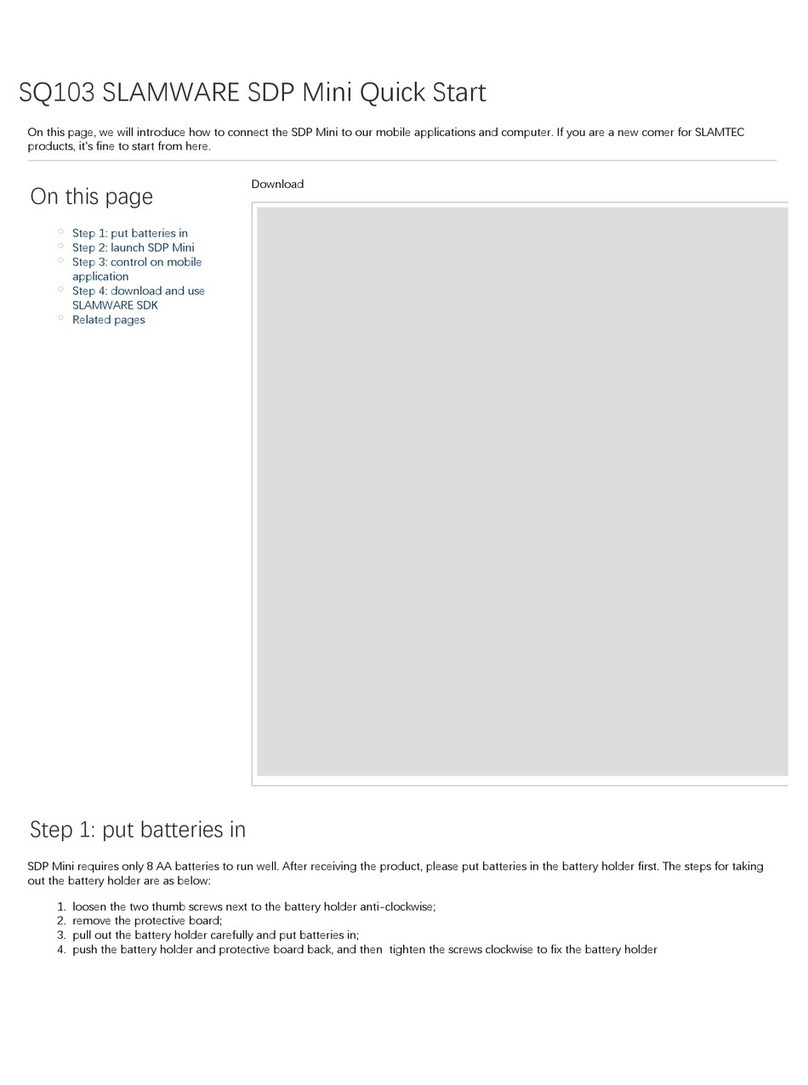
Slamtec
Slamtec SDP Mini User manual
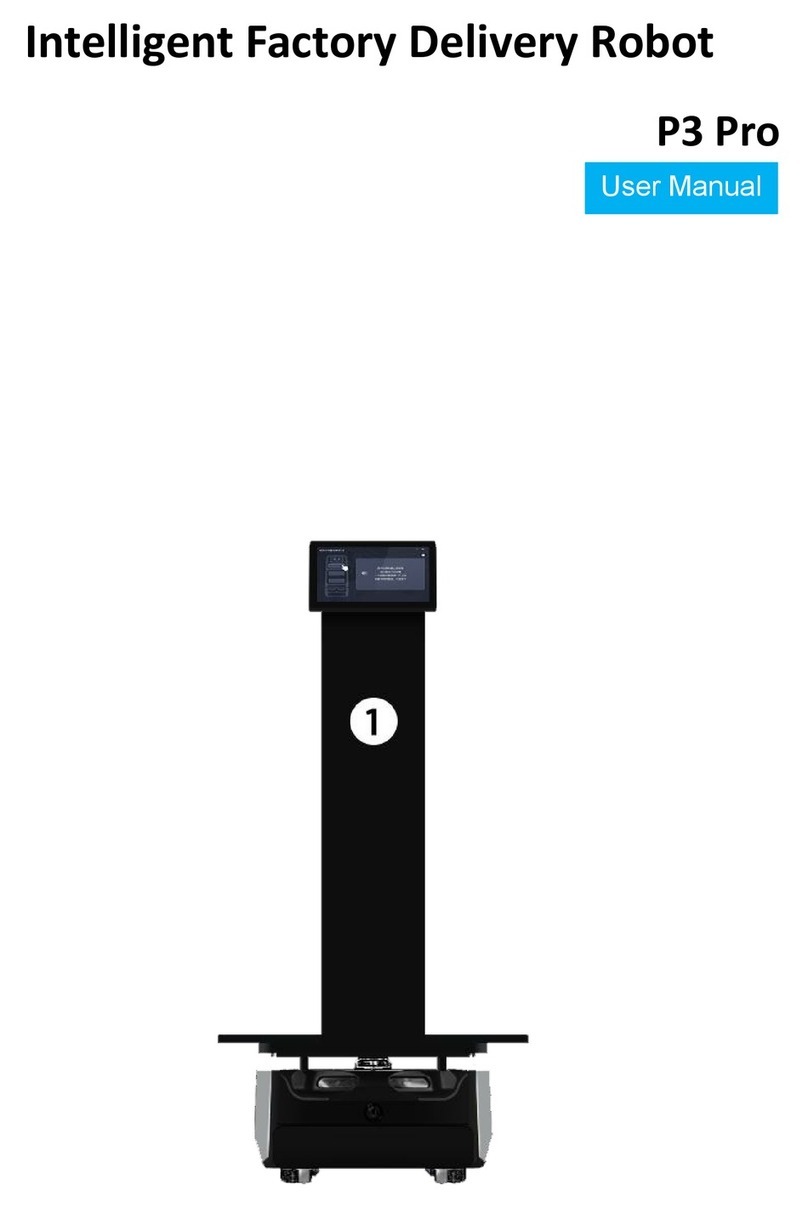
Slamtec
Slamtec P3Pro User manual
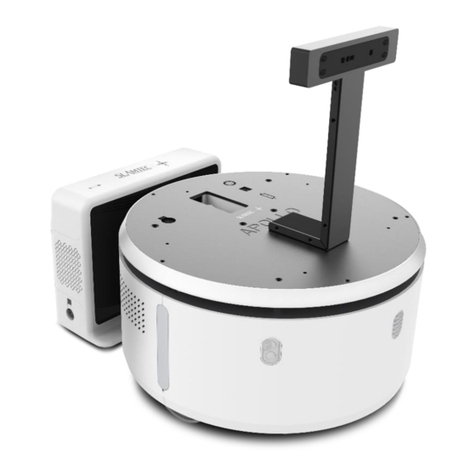
Slamtec
Slamtec APOLLO User manual
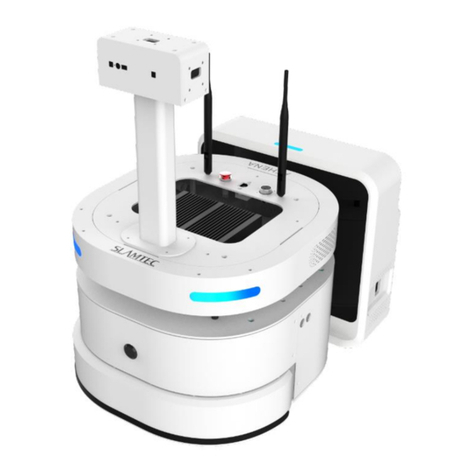
Slamtec
Slamtec ATHENA N4M11 User manual
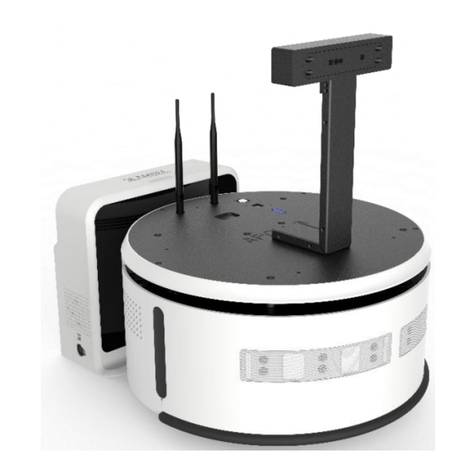
Slamtec
Slamtec APOLLO A4M31 User manual

Slamtec
Slamtec SDP Mini User manual
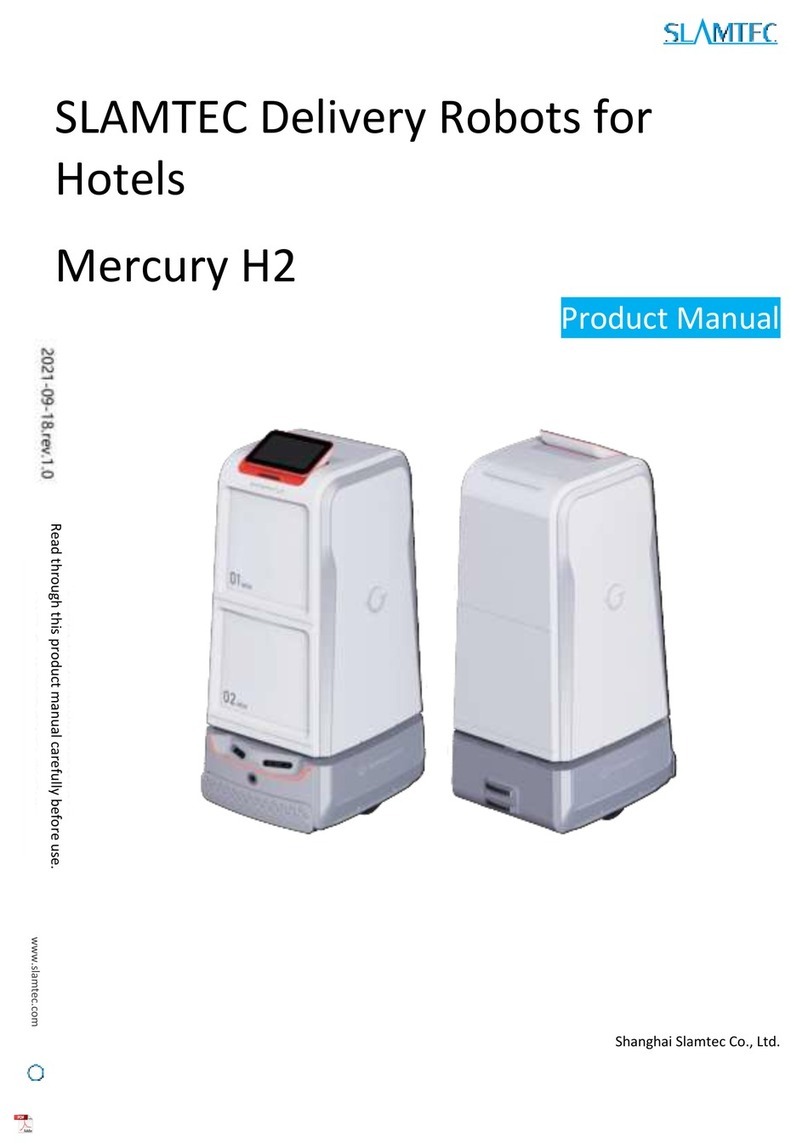
Slamtec
Slamtec Mercury H2 User manual
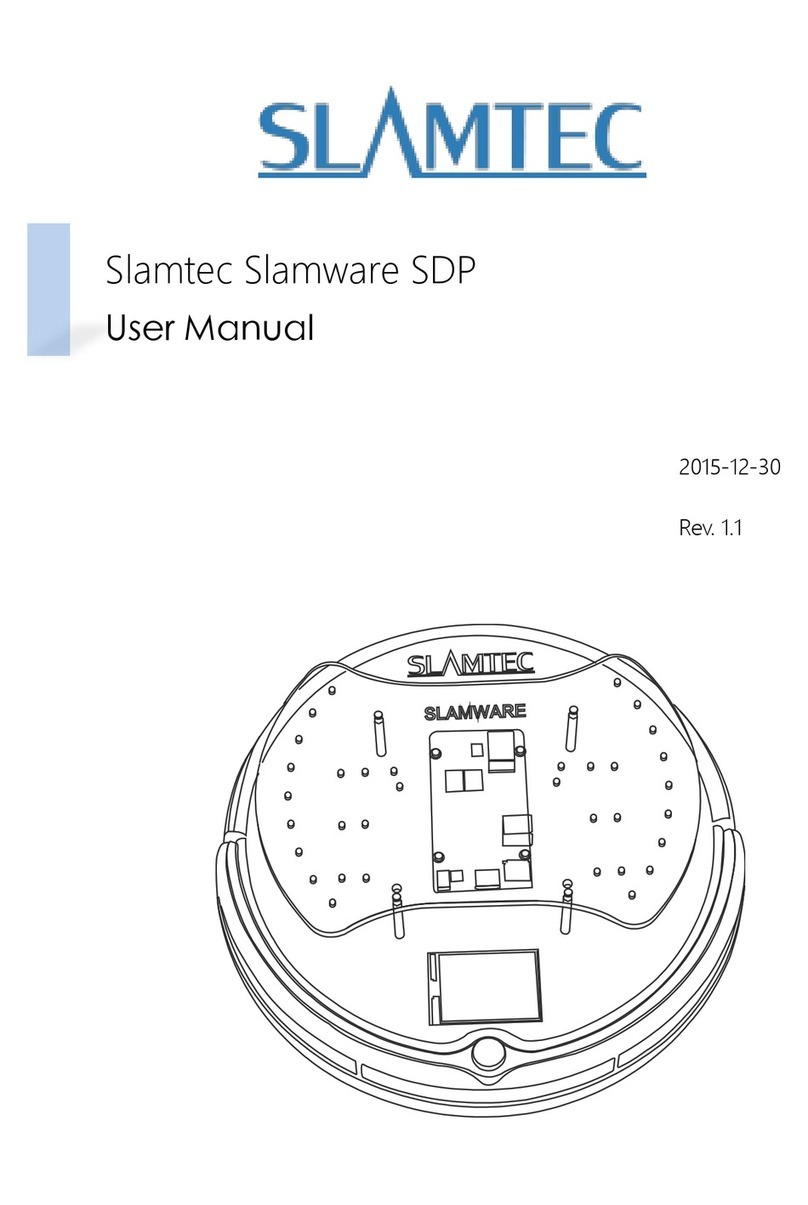
Slamtec
Slamtec Slamware SDP User manual
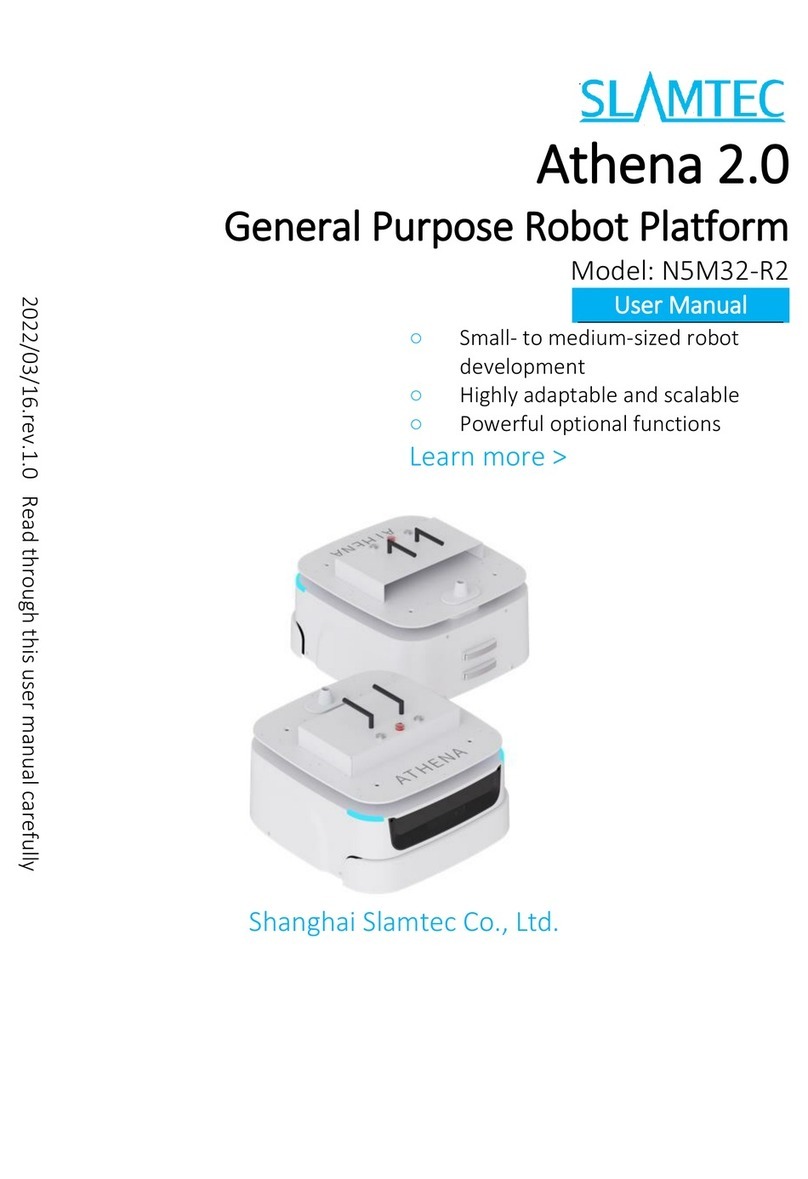
Slamtec
Slamtec N5M32-R2 User manual
Popular Robotics manuals by other brands
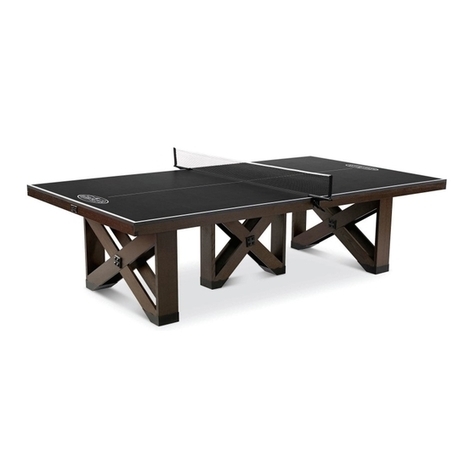
MD SPORTS
MD SPORTS TT218Y18001 Assembly instructions

MantaroBot
MantaroBot TeleMe 2 Assembly instructions & quick start guide

Circuitmess
Circuitmess Artemis Build guide
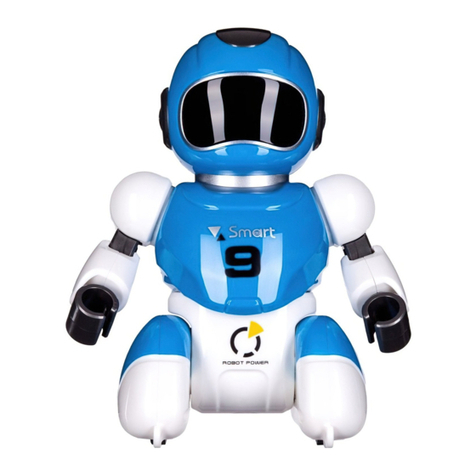
SAME
SAME 3066 user manual
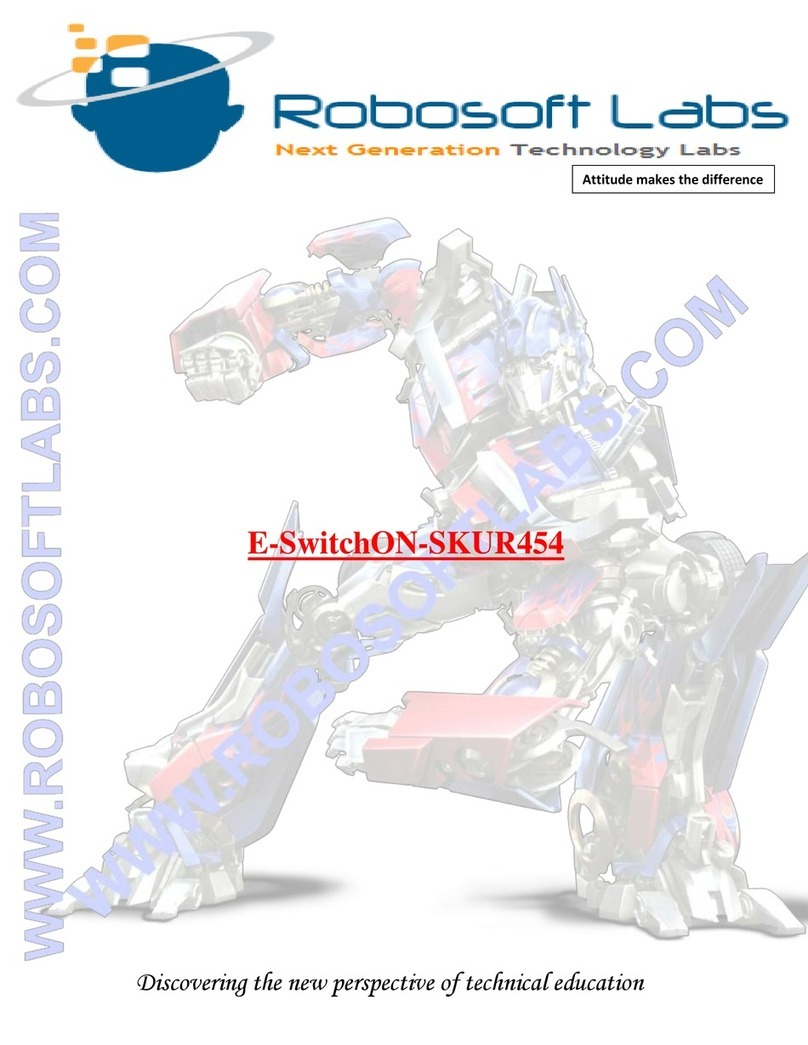
Robosoft
Robosoft E-SwitchON-SKUR454 quick start guide
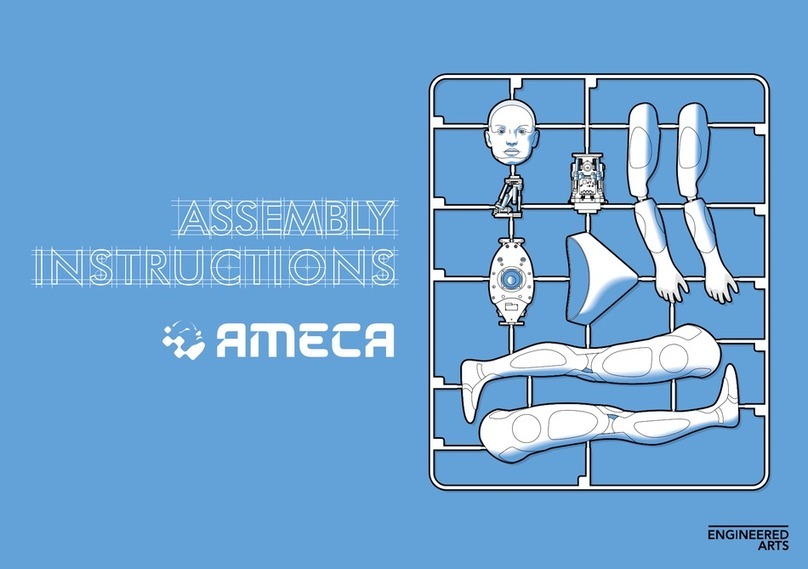
ENGINEERED ARTS
ENGINEERED ARTS Ameca Assembly instructions
